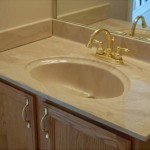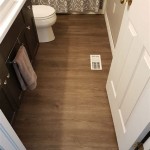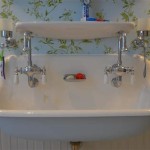How To Tile a Bathroom Wall Around a Tub
Tiling a bathroom wall around a tub is a home improvement project that can drastically enhance the aesthetics and value of a bathroom. While it requires patience and precision, a DIY approach can be rewarding and cost-effective. This article outlines a step-by-step process for achieving professional-looking results.
1. Preparation and Planning
Thorough preparation is crucial for successful tile installation. Begin by completely removing any existing wall covering, such as old tiles or wallpaper. Ensure the wall surface is clean, dry, and level. Any imperfections, like cracks or holes, should be repaired using appropriate patching compounds. Allow ample drying time for any repairs.
Accurate measurements are essential for determining the required number of tiles. Measure the area to be tiled and factor in a small percentage for cuts and waste. Consider the tile layout and pattern beforehand, particularly around corners and fixtures. Dry-fitting the tiles before applying adhesive can help visualize the final result and minimize errors.
Gather all necessary tools and materials before starting the project. This includes tiles, tile adhesive (thin-set mortar), grout, spacers, a notched trowel, a tile cutter or wet saw, a level, a rubber grout float, sponges, buckets, and safety equipment like gloves and eye protection.
2. Waterproofing is Essential
Waterproofing is a critical step, especially in a wet environment like a bathroom. Install a waterproof membrane over the wall surface, ensuring it extends over the lip of the tub flange. This membrane acts as a barrier against moisture penetration, protecting the underlying structure from water damage and preventing mold growth. Follow the manufacturer's instructions for proper installation of the chosen waterproofing membrane.
Pay particular attention to corners and seams, ensuring complete coverage and proper sealing. Overlapping the membrane at joints and using sealant tape can provide additional protection. Allow the waterproofing membrane to dry completely before proceeding with the tiling process.
3. Tile Installation
Begin tiling from the bottom edge of the tub flange, working upwards in rows. Using a notched trowel, apply a consistent layer of thin-set mortar to a small section of the wall, covering an area slightly larger than the size of a single tile. Comb the mortar with the notched edge of the trowel to create evenly spaced ridges. This ensures proper adhesion and prevents air pockets behind the tiles.
Place each tile firmly onto the mortar bed, using a twisting motion to ensure full contact. Insert tile spacers between adjacent tiles to maintain uniform grout lines. Regularly check the levelness of the tiles as you progress, both horizontally and vertically. Adjust tiles as needed while the mortar is still wet.
Cutting tiles is often necessary, especially around corners, edges, and fixtures. Use a tile cutter or wet saw for precise cuts. For intricate cuts, a tile nipper can be useful.
Continue installing tiles row by row, working from the tub upwards. Clean any excess mortar from the tile surface and between grout lines immediately using a damp sponge. Allow the thin-set mortar to cure completely according to the manufacturer’s instructions before grouting.
4. Grouting and Finishing
Once the thin-set is cured, remove the tile spacers. Mix the grout according to the manufacturer's instructions to achieve the desired consistency. Apply the grout using a rubber grout float, pressing it diagonally into the grout lines to ensure complete filling. Remove excess grout from the tile surface with the edge of the float.
After the grout has partially dried (typically 15-30 minutes), use a damp sponge to clean the remaining grout haze from the tile surface. Rinse the sponge frequently and wring it out thoroughly to avoid leaving excess water on the tiles. Buff the tiles with a clean cloth after the grout has fully dried.
Seal the grout lines with a grout sealer to prevent staining and water penetration. This is particularly important in wet areas like a bathroom. Follow the manufacturer’s instructions for application and drying times. Allow the sealant to cure completely before using the shower or tub.

The Complete Guide To Installing Tile On Shower Or Bathtub Walls

How To Tile A Bathtub Surround The Handyman S Daughter

How To Tile A Shower Surround Happihomemade With Sammi Ricke

3 Steps To The Perfect Tub Surround Scott Mcgillivray

Master Bathroom Remodel What I Learned About Tiling Houseful Of Handmade

How To Tile A Bathroom Wall Granada Cement Blog Ideas Tips And More

Tile And Tub Bathtub Surround Bathroom Redesign Shower Walls

Tile Under Tub Should You Do It

9 Stylish Alternatives For Ceramic Tile Shower Walls Or Bases Innovate Building Solutions Blog Home Remodeling Design Ideas Advice

Budget Bathroom Makeover With A Wow Factor Flawless Chaos
Related Posts







